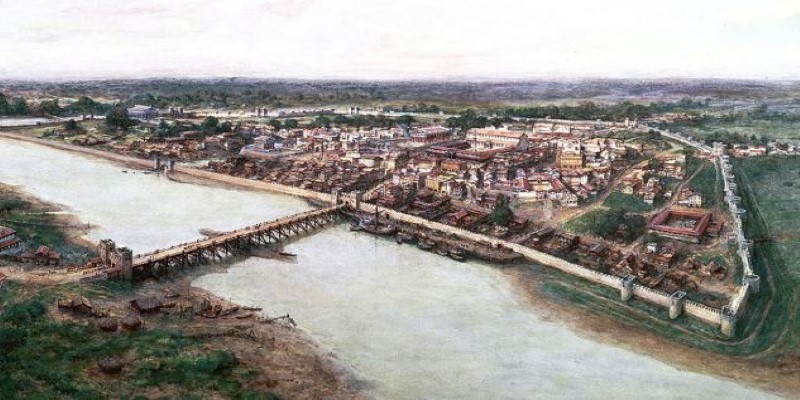Unveiling London’s Financial Powerhouses: Canary Wharf, the Square Mile, and Lombard Street
Oct 31, 2024 By Sid Leonard
Londons financial districts are more than just clusters of skyscrapers and offices; theyre living, breathing symbols of the citys ever-evolving story. From the ancient Roman walls of the Square Mile to the sleek glass towers of Canary Wharf, these districts dont just power the UK economythey define it.
And tucked in between them, Lombard Street, with its centuries-old connection to banking, serves as a reminder of Londons deep financial roots. Each district has its own personality, its own story to tell, and together, they form the backbone of one of the worlds largest financial centers.
The History and Transformation of Canary Wharf
Canary Wharf is the most modern of London's financial districts, and its rise reflects the shift in global finance towards larger corporate complexes. Located in the East End, Canary Wharf was originally a hub for shipping, home to the West India Docks, which thrived during the early 19th century. However, by the mid-20th century, the decline of traditional dock activity left the area lonely, leading to its eventual closure in 1980.
In the late 1980s, the British government, through the London Docklands Development Corporation, initiated a massive redevelopment plan. Canary Wharf was transformed into a financial district designed to rival the City of London. The creation of towering skyscrapers and cutting-edge infrastructure began in the 1990s, attracting global financial giants such as HSBC, Citigroup, and Barclays.
Canary Wharf today hosts some of the tallest buildings in Europe, including the iconic One Canada Square, and has become home to thousands of financial workers. While its gleaming towers make it a symbol of modern finance, the district is not without its challenges. The rise of remote work and shifts in global finance have led to an increased vacancy rate in recent years, sparking a push to diversify the area with more residential spaces, hotels, and retail offerings.
The Timeless Square Mile (City of London)
Known as the Square Mile, the City of London is the historical heart of both London and its financial sector. Its origins date back to Roman Londinium, established in the 1st century A.D. This area became a fortified trading hub and has since developed into one of the most important financial centers in the world.

The medieval period saw the Square Mile flourish as a center for trade, with guilds playing a critical role in its governance. Londons significance as a financial center continued to grow, especially after the establishment of the Bank of England in 1694 and the London Stock Exchange in the 17th century. The Great Fire of London in 1666 reshaped the architectural landscape, with Christopher Wrens St. Pauls Cathedral standing as a testament to the citys resilience.
Today, the Square Mile houses some of the most influential institutions in global finance, including the Bank of England, Lloyds of London, and numerous insurance firms and investment banks. Its skyline is dotted with iconic modern structures such as the Gherkin, the Cheesegrater, and the Shard, blending historical significance with contemporary business.
The Square Miles importance isnt limited to finance; its also a hub of ancient traditions and governance. The City of London Corporation, one of the worlds oldest municipal governments, still operates from here. Unique practices, such as the election of a Sheriff and the need for the monarch to seek permission to enter the City, highlight its distinct position within London and the UK as a whole.
Lombard Street: The Old Banking Hub
Lombard Street, though lesser known to the general public compared to Canary Wharf or the Square Mile, holds immense historical significance in Londons financial heritage. Dating back to the Middle Ages, this street became synonymous with banking, thanks to the arrival of Lombard bankers from Italy. The Lombards, known for their expertise in money lending, established a strong presence in London, and their legacy lives on in the streets name.
By the 16th century, Lombard Street had solidified its status as a financial center. Its proximity to the Royal Exchange further cemented its reputation, and many banks established their offices along this historic road. Even after the Great Fire of London destroyed much of the area in 1666, Lombard Street continued to thrive, playing a pivotal role in London's banking world.
Though the financial landscape of London has shifted significantly over the centuries, with many banks relocating to the Square Mile or Canary Wharf, Lombard Street remains a symbol of Londons long-standing influence in the world of finance. Its mix of historic buildings and modern offices tells the story of Londons evolution as a financial capital.
The Future of Londons Financial Districts
As London continues to evolve, so do its financial districts. Canary Wharf, despite its challenges with vacancies and changing work patterns post-pandemic, is shifting towards a more diversified development model. More residential, retail, and leisure spaces are being developed, making the district a more vibrant, 24/7 destination rather than a purely business-oriented zone.

While still a powerhouse of global finance, the Square Mile has also had to adapt. With technology transforming financial services, fintech startups are now sharing space with centuries-old institutions. The City has been actively investing in making its infrastructure future-proof, embracing smart technologies and new ways of working.
Lombard Street, though no longer at the heart of Londons financial machinery, remains an important symbol of the citys rich financial history. As global banking becomes more digital and decentralized, streets like Lombard represent the lasting importance of history and tradition in a rapidly changing world.
Conclusion
Londons financial districtsCanary Wharf, the Square Mile, and Lombard Streeteach tell a unique part of the citys story. Canary Wharf exemplifies modernity and reinvention, rising from the ashes of an industrial past to become a beacon of global commerce. The Square Mile, with its ancient traditions and historical gravitas, continues to wield significant influence over international finance.
Lombard Street stands as a testament to London's rich financial heritage, linking today's bustling markets to the city's medieval roots. Together, these districts not only represent the power of the global financial system but also London's capacity to adapt, innovate, and lead continuously.
-
 Know-how Jan 29, 2024
Know-how Jan 29, 2024Peddle Review 2024: A Reliable Way to Sell Your Car?
Are you trying to sell your trach cars? Let Peddle help you in doing so. Now you can easily sell your car without worrying about pickup and rates. Read more about Peddle car buying reviews.
-
 Banking Sep 13, 2024
Banking Sep 13, 2024EquityMultiple in 2024: Key Features and User Experiences
Discover how EquityMultiple is transforming real estate crowdfunding with user-friendly features, educational resources, and a supportive community for investors.
-
 Investment May 12, 2024
Investment May 12, 2024Decreasing Term Insurance - Examples and Pros and Cons
Decreasing limited pay life insurance reduces its death benefit over time. There may be a $500,000 death benefit upfront and a $10,000 yearly decrease.
-
 Banking May 19, 2024
Banking May 19, 2024The Basics of Price Matching: A Beginner's Guide to Saving Money While Shopping
Discover what price matching is and how it can be your secret weapon for saving money. Give this article a quick read to learn how to take advantage of discounts and maximize your savings.
